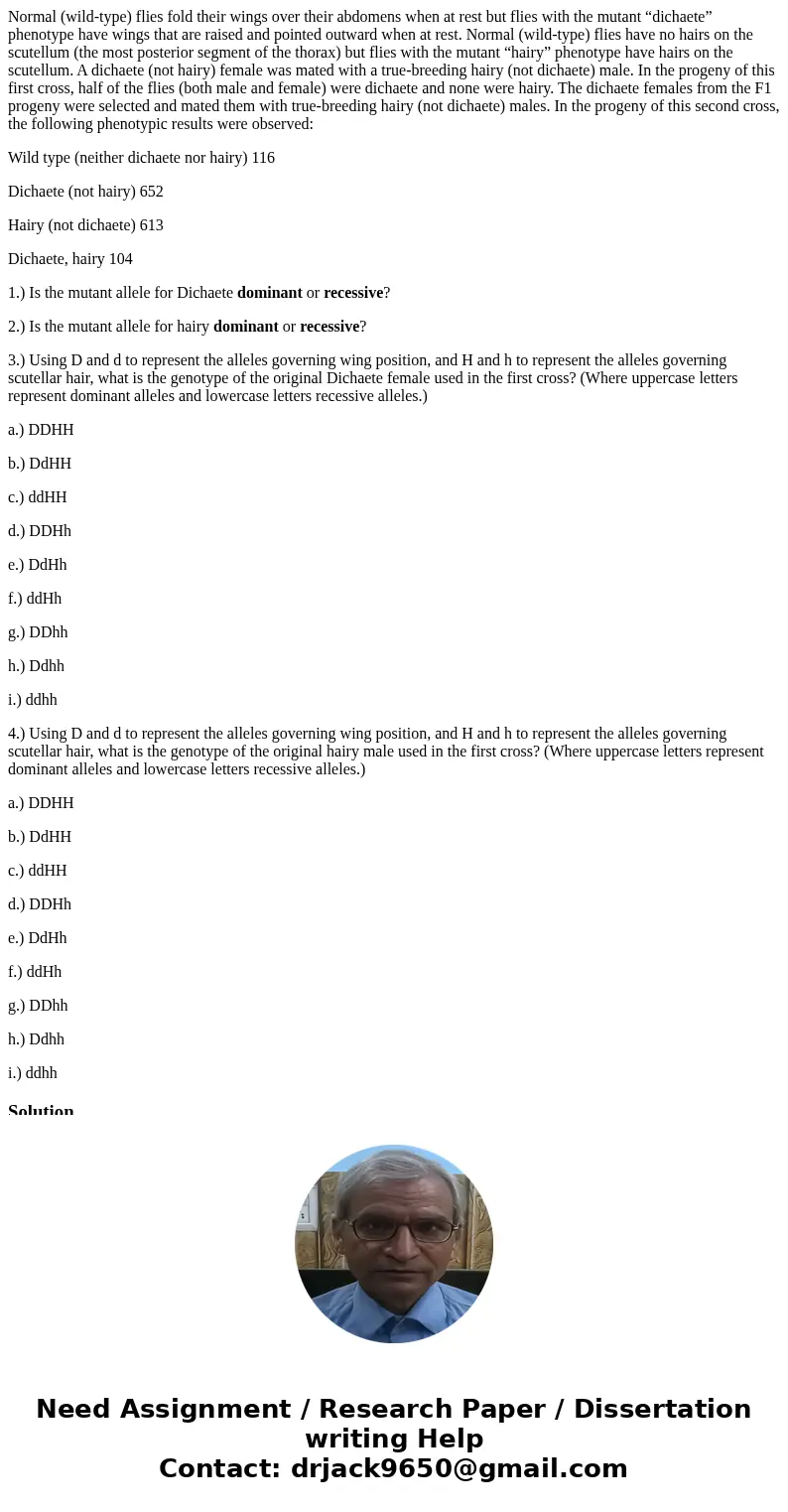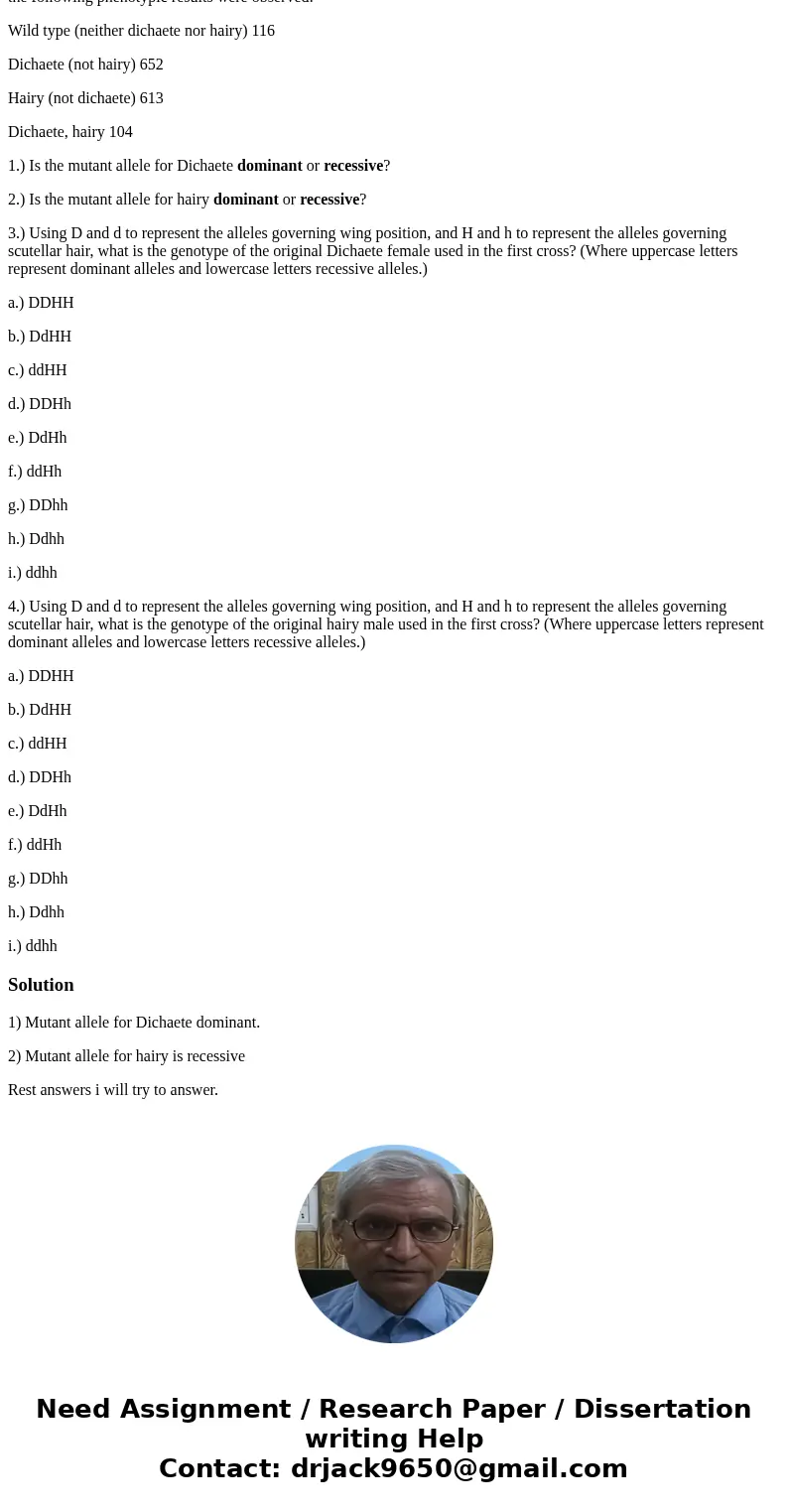Normal wildtype flies fold their wings over their abdomens w
Normal (wild-type) flies fold their wings over their abdomens when at rest but flies with the mutant “dichaete” phenotype have wings that are raised and pointed outward when at rest. Normal (wild-type) flies have no hairs on the scutellum (the most posterior segment of the thorax) but flies with the mutant “hairy” phenotype have hairs on the scutellum. A dichaete (not hairy) female was mated with a true-breeding hairy (not dichaete) male. In the progeny of this first cross, half of the flies (both male and female) were dichaete and none were hairy. The dichaete females from the F1 progeny were selected and mated them with true-breeding hairy (not dichaete) males. In the progeny of this second cross, the following phenotypic results were observed:
Wild type (neither dichaete nor hairy) 116
Dichaete (not hairy) 652
Hairy (not dichaete) 613
Dichaete, hairy 104
1.) Is the mutant allele for Dichaete dominant or recessive?
2.) Is the mutant allele for hairy dominant or recessive?
3.) Using D and d to represent the alleles governing wing position, and H and h to represent the alleles governing scutellar hair, what is the genotype of the original Dichaete female used in the first cross? (Where uppercase letters represent dominant alleles and lowercase letters recessive alleles.)
a.) DDHH
b.) DdHH
c.) ddHH
d.) DDHh
e.) DdHh
f.) ddHh
g.) DDhh
h.) Ddhh
i.) ddhh
4.) Using D and d to represent the alleles governing wing position, and H and h to represent the alleles governing scutellar hair, what is the genotype of the original hairy male used in the first cross? (Where uppercase letters represent dominant alleles and lowercase letters recessive alleles.)
a.) DDHH
b.) DdHH
c.) ddHH
d.) DDHh
e.) DdHh
f.) ddHh
g.) DDhh
h.) Ddhh
i.) ddhh
Solution
1) Mutant allele for Dichaete dominant.
2) Mutant allele for hairy is recessive
Rest answers i will try to answer.


 Homework Sourse
Homework Sourse